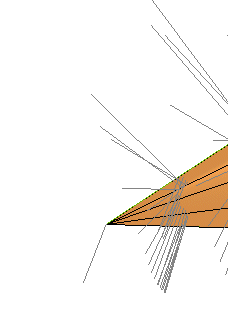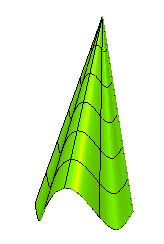
Using the Normals command under Analysis, you can see the normal at the topmost vertex of the surface is not univocally defined:
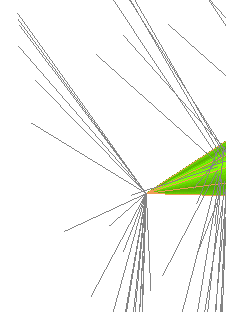
By using the Normal to Degenerate Surface command you can very easily define the normal of a degenerate surface. You can proceed as follows. You can follow this step-by-step example by loading file:"DegenerateSurface.e3"

Using the Normals command under
Analysis, you can see the normal at the topmost vertex of the surface is not univocally defined:

| 1 | Select the degenerate surface to be modified (please note that non-degenerate surface selection is not enabled). If the selected surface is not a NURBS, you will be asked for a confirmation to convert it into a NURBS (unless you have deselected the Ask before converting check box). Once the surface is selected, the normal at the topmost vertex is automatically defined and a preview is displayed. 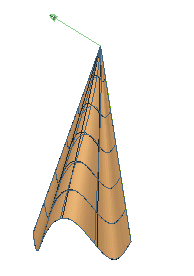 The command enables you to correctly define the normal but, as you can see, this inevitably has the effect of modifying the shape of the surface. |
| 2 | Click  or or  to confirm. to confirm.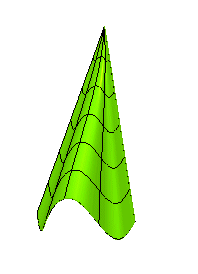 Click  to discard your changes. to discard your changes. |
Now, if you check the surface normals using the Normals command under
Analysis again, you will see the normal at the topmost vertex is correctly defined.
